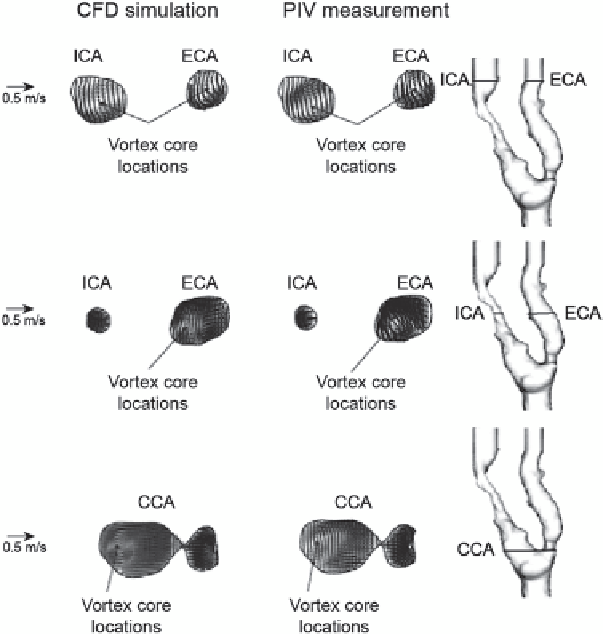Biomedical Engineering Reference
In-Depth Information
Fig. 7.9
Measured and predicted secondary flow pattern at the selected planes of a stenosed
carotid bifurcation. Various sections of the carotid bifurcation from
a
to
c
are visualised based
on the predicted and measured flow (in the
top
-
down
direction of the anatomy). The recirculation
regions of secondary flows and the predicted vortex core locations simulated by CFD agree well
with experimental measurements. The predicted flow differs slightly from the measured ones at
the common carotid artery
secondary flows appear to be relatively weaker when compared to measurements.
This further confirms the breakdown of the laminar flow calculations in attempting
to capture the onset of turbulence, which subsequently underestimated the strength
of the resultant secondary flows.
In general, the main flow characteristic can be successfully captured using CFD.
The predicted vortex cores of the secondary flow compare favourably with measure-
ment data. There is a limitation in the capability of the CFD model to accurately pre-
dict the transition of laminar flow upstream to weak turbulence downstream. This
highlights the deficiency of the current CFD technique to properly capture transition
turbulent flow, and therefore requires further studies to better understand these em-
bedded chaotic flow structures. Experimental work may be carried out to measure
blood flow structure under transient pulsatile flow situation, which allows addi-
tional validation to be performed on the CFD model in predicting actual blood flow

Search WWH ::

Custom Search